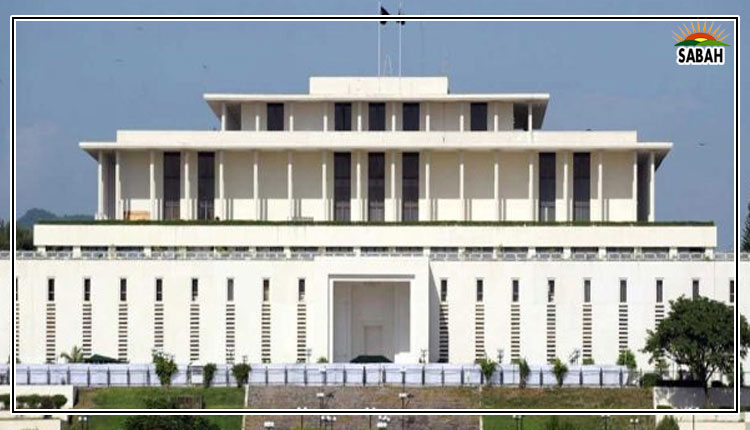Implementing fiscal strategy…Ali Tauqeer Sheikh
THE federal government has rectified what successive governments in Pakistan had overlooked for many years: announcing a National Climate Finance Strategy to help mainstream climate change in national policymaking processes.
The NCFS has raised the bar of Pakistans ambition and committed to reorient the portfolios of key national institutions for climate finance, enable innovative instruments, secure carbon credits and accreditation with global climate funds.
Building resilience to climate disasters for reducing economic costs for the economy is one of four objectives of the ongoing $3 billion Stand-by Arrangement with the IMF. The NCFS is expected to create some badly needed fiscal space while building resilience.
The World Bank and IMF had earlier indicated that development and climate financing may not flow to Pakistan in future unless national investments were aligned with Climate-Public Investment Management Assessment. The C-PIMA is derived from the IMFs time-tested PMIA used as a yardstick or conditionality for disbursements. This will hopefully help the government identify potential improvements in public investment institutions and processes to build a low-carbon and climate-resilient economy.
Pakistan has just committed to IMF that C-PMIA will be presented to the cabinet for approval and that Pakistans future investments will be climate resilient. The process will begin with three key institutions: Special Investment Facilitation Council (SIFC), Public Sector Development Plans (PSDP), and Public Private Partnership Authority (3PA), all housed and managed by the Planning Commission. CPEC was not mentioned in the blueprint.
The C-PMIA will be accomplished through a newly minted Sustainable Finance Bureau, again at the Planning Commission, to revolutionise climate finance. It is expected that the SFB will reorient 20 per cent of the new PSDP schemes during FY 2023-24, amounting to Rs925bn.
These projects will qualify Pakistan, it is hoped, for concessional finances and help it meet targets set in the National Adaptation Plan (NAP) and the Nationally Determined Contributions (NDCs). Both NAP and NDCs reflect Pakistans sovereign commitments, as part of the Paris Agreement, submitted to the secretariat of the climate change convention.
Has Pakistan revised its construction standards to reduce climate risks and costs?
The government plans to invest in resilience though 4RF (Resilient Recovery, Rehabilitation, and Reconstruction Framework that was developed after the 2022 floods), recently updated 4th NFPP (National Flood Protection Plan), and by developing sectoral priorities.
The blueprint of NCFS has not furnished details, but the sectoral priorities will be derived from the National Climate Change Policy and NAP. These will presumably be developed by the sectoral ministries and departments.
In order to meet the IMF conditionalities, the policymakers have packaged many ongoing endeavours and cobbled them together to meet the IMF demands. If successful, it will reflect the whole-of-government approach that is mentioned in several national and provincial policies but seldom translated into action. The progress on NCFS will be reviewed early next year under five heads already given in the C-PIMA: climate-smart planning, inter-ministerial coordination, appraisal and selection of projects, budgeting and portfolio management, and risk management.
While the government has announced its commitment, how will it create synergy to ensure its timebound implementation? The fiscal strategy has committed that all projects will have new templates for project concept notes, and technical feasibility studies across the planning documents to completion certificates.
This will require the Planning Commission to revise PC-I to PC-V in order to ensure that public sector projects also map climate risks and respond to adaptation, mitigation, and their development co-benefits, and the finance ministry to adopt mechanisms to track all its climate-related expenditures.
This necessitates brass-tracking on multiple fronts, particularly: i) getting SFB off the ground, ii) notifying templates for climate-smart PSDP projects, iii) initiating expenditure tracking and, finally, iv) putting in place an entire ecosystem that includes carbon trading policy, carbon inventory and its digitalisation, and the required monitoring and validation systems.
Meaningful progress on these will serve as precursors for the two urgent objectives of the NCFS: accessing concessional finances and leveraging private sector investments.
Pakistans failure to access international climate finance at scale is often attributed to relatively limited technical capacity of the focal ministry. Instead of understanding the deeper reasons, many ministries and provincial departments have begun to set up specialised units to lure climate finance rather than embedding resilience in their sectoral policies and projects.
These lacunae in governance are confusing for everyone, starting from policymakers, multilateral and bilateral development partners and their governments, to private sector investors and citizens. The NCFS will hopefully bring some discipline to this mayhem.
Underneath this veneer of macro-level commitments are deep layers of needed structural and institutional reforms. The IMF is a new entrant in Pakistans climate change space and it is still in the process of defining its standards and procedures.
By way of example, its term climate-aware infrastructure has not been defined and adopted by Pakistan, let alone implementing it on the ground. In the 2022 floods, except for $12,969 million losses incurred in agriculture, the major amount of $30bn losses were infrastructural damages in housing, education, health, roads, transmission lines, and so on. Has Pakistan revised its construction standards to reduce climate risks and costs?
The IMF can take comfort in setting the direction for Pakistans long journey towards resilience and tick the right boxes to enable the release of the second tranche early next year. Alternatively, the interim government can set a realistic roadmap that balances reform-averse government machinery, urgency of climate action, and the desperate need to build upon the Stand-by Arrangement.
Since the second IMF review in 2024 will cover five interrelated domains (planning, coordination, projects, budgeting and portfolio management, and risk management), it is imperative that finance strategy implementation is synchronised by trespassing silos within which the ministries often operate.
The NCFS is designed as an inter-ministerial and multisectoral document that would, out of necessity, require whole-of-government approach, and that is not possible without exercising convening power.
After all, climate finance is a function of climate governance and climate diplomacy at COP28. Both will need to work in tandem and to leverage one to maximise the other. This will require the NCFS to have its own dedicated secretariat to oversee its realisation rather than leaving it to chance.
Courtesy Dawn












